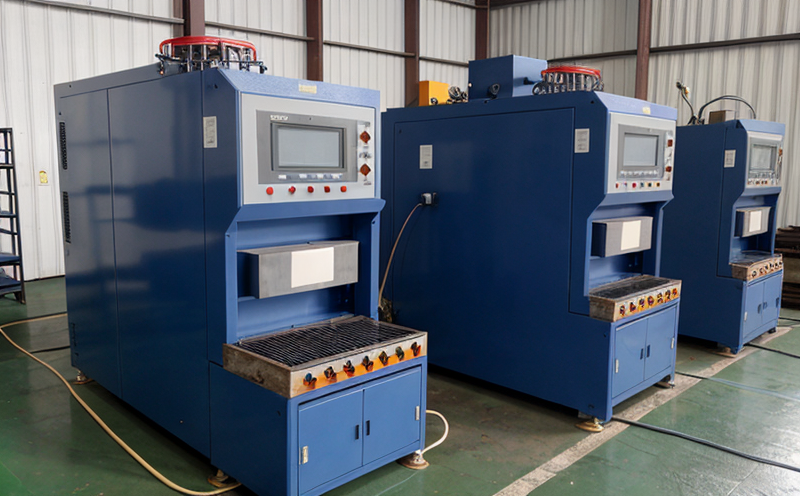ISO 22198 Silk Fiber Surface Defect Testing
The ISO 22198 standard provides a comprehensive framework for the testing of silk fibers, particularly focusing on surface defects. This service is essential in ensuring that silk products meet the highest quality and safety standards required by both industry and consumers.
Surface defects can significantly impact the appearance and functionality of silk-based textiles and garments. Identifying these defects early in the manufacturing process allows for corrective actions to be implemented, thereby minimizing waste and ensuring product consistency. This service plays a crucial role in quality assurance for companies involved in textile production, fashion design, and raw material sourcing.
The testing process involves meticulous examination of silk fibers under controlled conditions, using specialized equipment designed to capture even the slightest imperfections on the fiber surface. The ability to detect such defects is critical for maintaining brand reputation and ensuring that products meet international standards set forth by organizations like ISO.
Our laboratory adheres strictly to the procedures outlined in ISO 22198, which include detailed guidelines on specimen preparation, testing environment control, and visual inspection techniques. By leveraging advanced microscopy and lighting systems, we can provide highly accurate assessments of silk fiber surfaces, enabling our clients to make informed decisions about their supply chains and manufacturing processes.
For those interested in learning more about this service or integrating it into their quality management systems, consider attending a workshop led by industry experts who will guide you through the nuances of implementing ISO 22198 compliance within your organization. Additionally, our team can offer tailored solutions based on specific client needs, ensuring that every aspect of silk fiber testing is addressed comprehensively.
Understanding the importance of surface defect testing in silk fibers not only enhances product quality but also contributes to environmental sustainability by reducing material wastage and promoting efficient resource utilization. Investing in this service demonstrates a commitment to excellence and sets your business apart from competitors who may overlook these critical factors.
Scope and Methodology
| Aspect | Description |
|---|---|
| Sampling | The sampling protocol specified in ISO 22198 ensures that representative samples of silk fibers are selected for testing. This includes random selection from production batches and adherence to predefined sample sizes. |
| Environmental Controls | To maintain consistent test results, environmental conditions such as temperature, humidity, and lighting must be strictly controlled during the examination process. These parameters are crucial for accurate visual assessments of silk fiber surfaces. |
| Microscopy Techniques | Varying magnifications and types of microscopes (e.g., optical, scanning electron) are employed to capture detailed images of silk fibers. This allows for the identification of various defect categories. |
| Defect Classification | Defects can be classified into several categories including neps, broken filaments, and color inconsistencies. Each category has specific criteria for acceptance or rejection based on industry standards. |
Benefits
Implementing ISO 22198 Silk Fiber Surface Defect Testing brings numerous benefits to industrial manufacturing and processing operations:
- Enhanced Product Quality: Early detection of defects ensures that only high-quality silk fibers reach the market, enhancing consumer satisfaction.
- Improved Efficiency: By identifying issues at an earlier stage, manufacturers can reduce downtime and improve overall production efficiency.
- Better Compliance: Adherence to international standards fosters trust among customers and regulatory bodies, facilitating smoother business operations.
- Sustainable Practices: Minimizing waste through precise quality control contributes positively towards environmental sustainability goals.
In conclusion, ISO 22198 Silk Fiber Surface Defect Testing is a vital component of any comprehensive quality assurance program aimed at producing top-notch silk-based products. Investing in this service not only boosts operational excellence but also strengthens your company’s competitive edge in the global marketplace.
Quality and Reliability Assurance
- Detailed Documentation: All tests conducted are meticulously documented, ensuring transparency and traceability throughout the process.
- Repeatable Results: Our methods guarantee consistent results across multiple trials, providing reliable data for decision-making purposes.
- Continuous Improvement: Regular audits of our practices ensure that we remain up-to-date with the latest industry trends and best practices.
- Comprehensive Reporting: Clients receive detailed reports outlining findings and recommendations, supporting informed business strategies.





